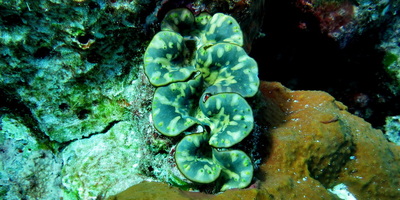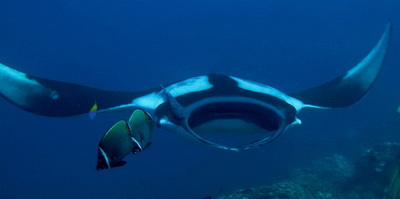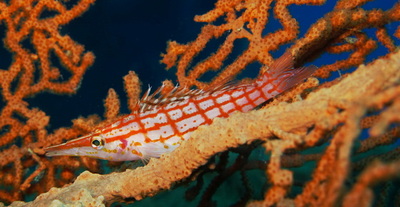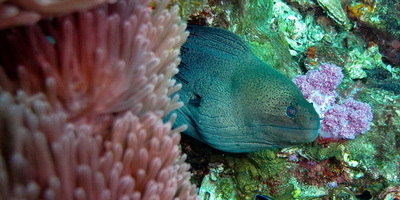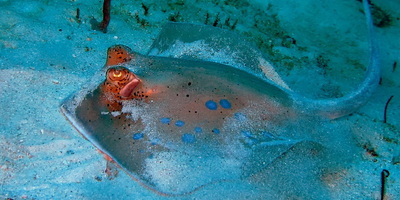Phuket Dive Guide : Phi Phi Leh - Maya wall
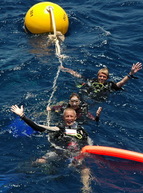
About the location and site
Maya Bay (Ao Maya) forms a stunningly beautiful lagoon sheltered by 100-metre high cliffs on three sides at the southwestern end of Phi Phi Ley. Inside the bay there are several beaches, most are small and some only exist at low tide. The main one is around 200 metres long with silky soft white sand, underwater colourful coral and exotic fish in exceptionally clear water. The whole bay is one big reef. It became famous as the setting for the movie "The Beach" filmed here in 1999. With its clear crystal waters, white sand powder, and lush tropical vegetation, beautiful it is, secluded it is not. Despite the crowded feeling, Maya Bay remains a place to see so try to come early in the morning or after 17 pm to avoid the crowds.
There are 3 possibilities to dive. Firstly, you have the bay itself, more used by snorkelers than divers do. The limestone rocks, which circle Maya Bay, are full of cracks and crevices that are teaming with marine life and scattered amongst the sand are coral bommies. Secondly, the southern outside of the bay at "Maya Cave" offers a large cave, one of the largest in the area. Remember not to penetrate caves without special training and equipment.
Maya Bay (Ao Maya) forms a stunningly beautiful lagoon sheltered by 100-metre high cliffs on three sides at the southwestern end of Phi Phi Ley. Inside the bay there are several beaches, most are small and some only exist at low tide. The main one is around 200 metres long with silky soft white sand, underwater colourful coral and exotic fish in exceptionally clear water. The whole bay is one big reef. It became famous as the setting for the movie "The Beach" filmed here in 1999. With its clear crystal waters, white sand powder, and lush tropical vegetation, beautiful it is, secluded it is not. Despite the crowded feeling, Maya Bay remains a place to see so try to come early in the morning or after 17 pm to avoid the crowds.
There are 3 possibilities to dive. Firstly, you have the bay itself, more used by snorkelers than divers do. The limestone rocks, which circle Maya Bay, are full of cracks and crevices that are teaming with marine life and scattered amongst the sand are coral bommies. Secondly, the southern outside of the bay at "Maya Cave" offers a large cave, one of the largest in the area. Remember not to penetrate caves without special training and equipment.
Thirdly, the northern outside of the bay, at "Maya Wall" have some small swim-throughs and this place is more frequently dived. The best area at the north side is found at about 16 - 18m on the NW point, the so-called "Maya Corner". Huge granite boulders are strewn together in such a way that they have formed exciting swim-throughs and a steep wall here. Schools of glassfish sometimes block you sight. There are several mooring lines along the length of the wall. At the start of the dive, you may drop down to a maximum of 30m just to see if there are any leopard sharks on the sandy bottom but the majority of your dive will be at around 15-20 meters where all the action is.. Ascending slowly, the wall has some hard coral cover and whip corals, which are home to numerous reef fish such as bannerfish, Moorish idols, wrasse, and snappers. Using a torch, you may find shrimps and crabs hiding in the cracks. A frequent highlight of this wall dive can be found around the most northerly mooring line where groups of Black Tip reef sharks cruise around. It is also a good spot to look out for more Leopard sharks and hawksbill turtles.
